Secret Health Remedies That Are Hiding In Your Kitchen Cabinet
Did you know that when you open your kitchen cabinet and reach for some spices and herbs to kick your meal up a notch, that you're adding essential nutrients and vitamins your body needs to heal and protect itself? From the sweet and indulgent tastes of cinnamon and mint to the savory and bold flavor of dill and garlic, this wide variety of spices and herbs each contain antioxidant properties that can help your body recover and protect it from a multitude of illnesses, from the common cold to diabetes and even cancer.
Find out now what secret health benefits the spices in your cabinet hold, and how they might just help you live not only a tasty life with delicious food, but a longer and healthier one too.
Crazy For Cinnamon

Probably one of the most common spices found in any kitchen cabinet, cinnamon has been used as a traditional remedy for multiple ailments and has the highest antioxidant value of any spice. It has shown to reduce inflammation, lower blood sugar and blood triglyceride levels, as well as lower cholesterol, making it a helpful aid in weight management and managing insulin levels. Cinnamon is a known remedy for diabetes, infection, and to alleviate nausea. The nutrients found in cinnamon include manganese, iron, and calcium, and it also contains antimicrobial properties, which are not only healthy for the body, but can also extend the life of food. Cinnamon is usually enjoyed in sweet dishes, such as cookies, pies, and cakes, though it can also be sprinkled on oatmeal, toast, plain yogurt, in coffee and savory soups, and is a must-have in any sweet potato recipe.
Let's discover the remarkable healing properties of another staple in the kitchen, ginger.
The Great Ginger (Root)

Ginger, a popular winter spice everyone loves, has a variety of health benefits that can manage and prevent certain diseases due to its antioxidant and anti-inflammatory elements - as it is a common remedy for nausea, gastrointestinal discomfort, and for treating colds and respiratory issues. It has also been used to treat morning sickness and chemotherapy-induced nausea and might be a possible aid in weight management as it increases satiety. Try ginger in baked goods such as cookies and muffins, but also in herbal and green teas to truly boost your antioxidant intake. Ginger is also a great way to add a powerful punch to smoothies, as well as to numerous Indian and East Asian dishes.
Next, let's find out how mint is used to treat indigestion and other health problems.
Magnificent Mint
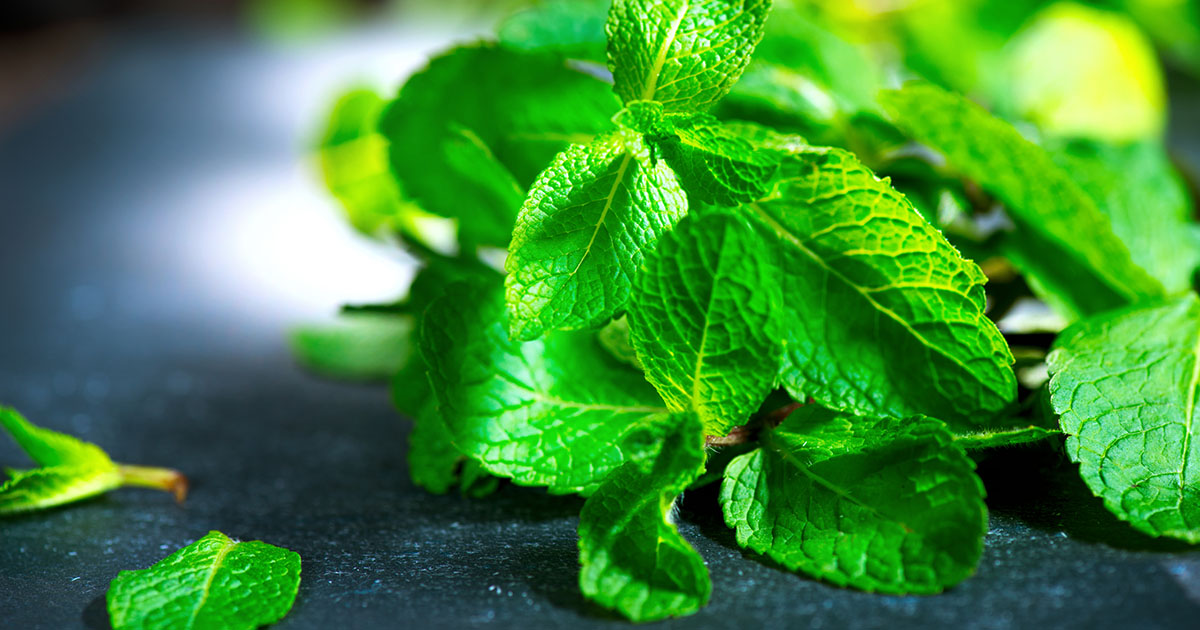
Used for centuries as a natural digestive aid, mint is a soothing and calming herb well known to help relieve an upset stomach or indigestion, as well as ease the digestive tract so it can function properly. Mint is also believed to increase bile secretion and encourage bile flow, which speeds and eases the digestive system, which may also support healthy cholesterol levels. Mint is also widely known to help treat nausea. The majority of individuals enjoy mint as a tea, and its versatile oils have been used in breath fresheners, toothpaste, and chewing gum. This sweet herb also contains antioxidants and an anti-inflammatory agent called rosmarinic acid (usually associated with rosemary), that has been studied for effectiveness in relieving seasonal allergy symptoms. The methanol found in mint is a natural decongestant that can help alleviate colds, and mint is also known to help with breastfeeding. As well, peppermint oil can help relieve irritable bowel syndrome (IBS). Mint is best consumed as a tea, however, it can also be used as a rub for lamb and other meats.
Continue reading to unearth the healing properties of the ancient spice, turmeric.
Terrific Turmeric
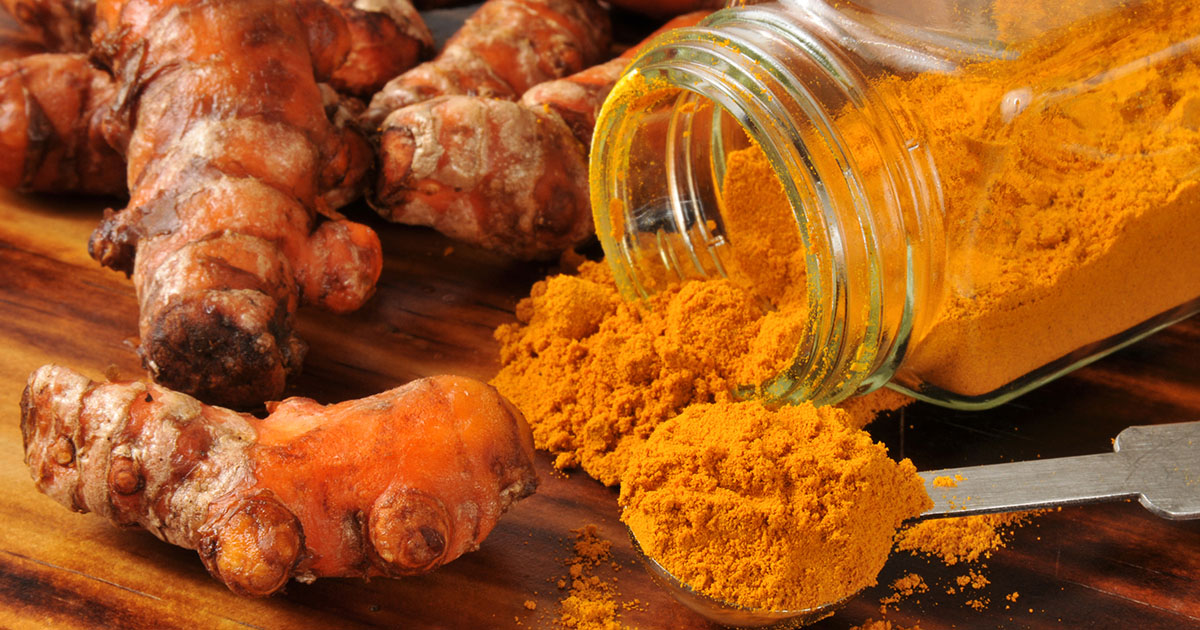
Turmeric, an ancient spice used in many South Asian dishes and for thousands of years to treat a wide variety of ailments is a necessity in your kitchen cabinet as it packs numerous health benefits as well as flavor. Turmeric is known to help treat conditions such as joint pain, arthritis, diabetes, digestive issues, as well as cancer. This ancient spice is also believed to help boost and protect the immune system, especially for infants. The active element in turmeric, curcumin, is known to have anti-inflammatory properties as well. You can use turmeric in many dishes, such as in grain dishes, such as pilaf or rice, chia pudding, teas, sauces, as well as curries. Turmeric can also be used to make golden milk, a popular hot beverage prepared in India to help increase an infant's immunity and treat the common cold.
Let's learn more about another mighty herb great for healing colds: garlic.
Gaga For Garlic
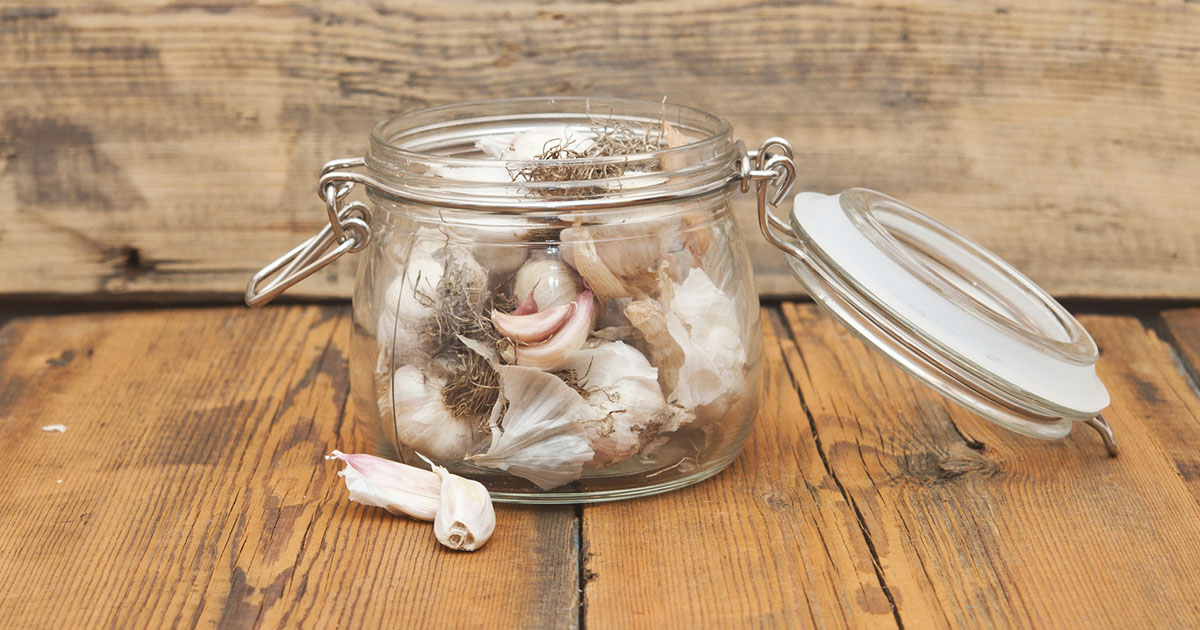
Garlic, whether minced, fresh, in cloves, or in powder form, is a fantastic way to add intense flavoring to your favorite foods, with many added health benefits. Many studies have shown the different compounds found in garlic state it can decrease the risk of cardiovascular disease, as well as high cholesterol, and can potentially manage blood pressure and insulin levels. It helps prevent heart ailments by clearing up blocked arteries. Garlic is also a well known cold remedy, as it has anti-bacterial and anti-fungal properties due to its sulfur-containing compound, Allicin, which also aids in relieving digestive issues and flushing out toxins. In addition to helping the body build up an immunity towards colds and the flu, garlic can help heal skin scars, as well as it might have antitumor and anti-microbial effects. You can add garlic to practically anything, but it is especially tasty in pasta, sauces, curries, pizza, soups, potatoes and baked vegetables, and any foods requiring a more savory palette.
Next, discover how cumin has been used as a powerful body healer for centuries.
The Calming Power Of Cumin
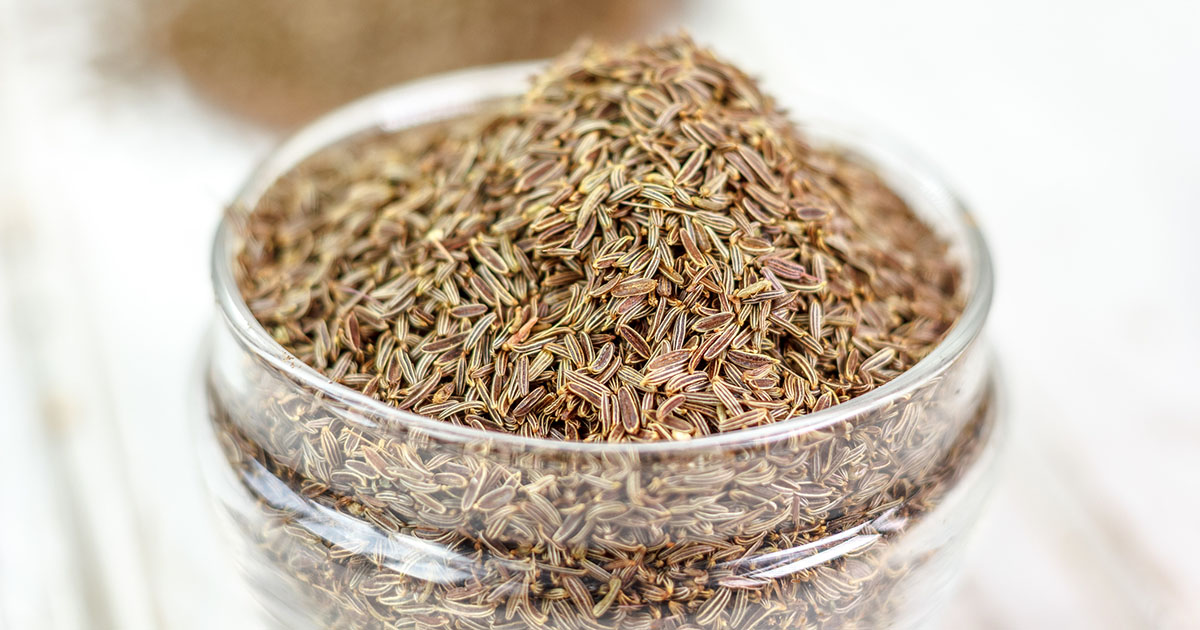
More commonly described as the spice that gives Mexican food its zesty flavor, cumin is an ancient spice from Egypt, that can be used in a variety of foods in different ways. As part of the parsley family, cumin is known for its healing properties in curing infections and aiding the digestive system. However, it also boosts the immune system due to its vitamin C presence, treats respiratory disorders as it acts as an expectorant and anti-congestive agent with disinfectant properties to heal and clear the respiratory system of mucus. Its antioxidant properties, specifically its concentration of vitamin E, promotes skin health, but cumin is also recognized for helping to treat insomnia, preventing diabetes and cancer, and also has antiviral and antibacterial properties, which fight against colds and viruses. Cumin also has a high source of iron, which aids in cognitive abilities, contains bone-strengthening calcium, and helps the body detoxify itself. Cumin can be used in numerous dishes such as tacos, burritos, fajitas, in salads and soups, as well as with sweet potatoes and in chili.
Continue reading to find out how rosemary is a great way to manage blood pressure.
Radiant Rosemary
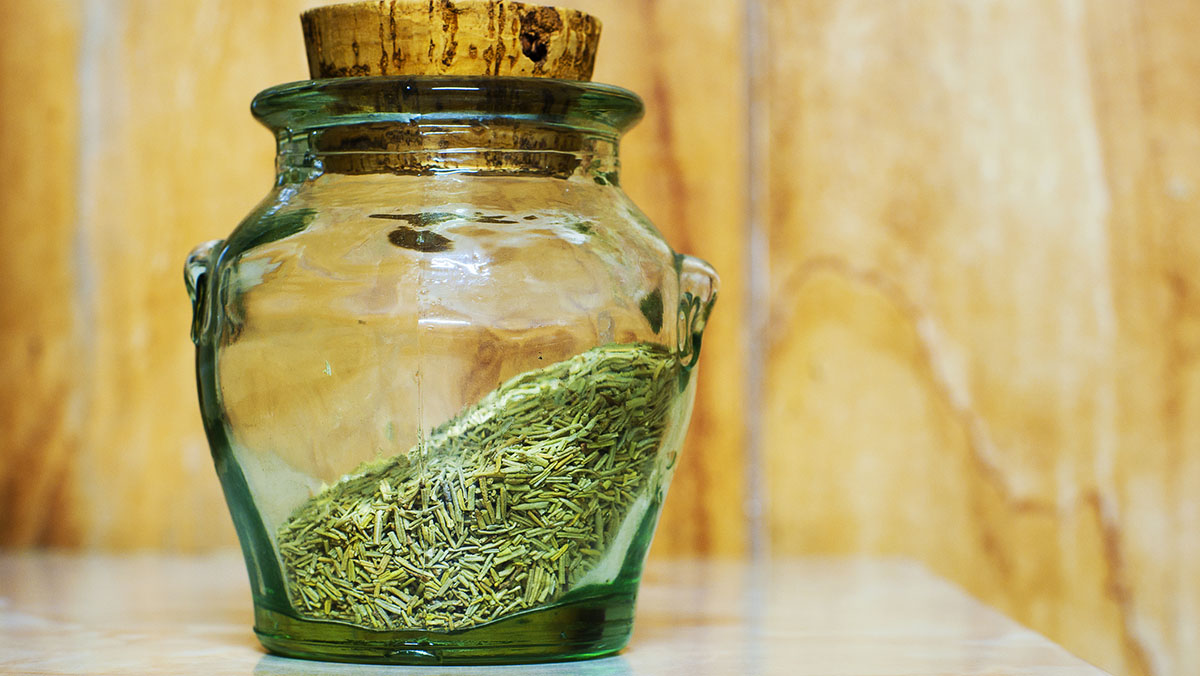
A member of the mint family, rosemary, whether consumed in its fresh, dried, or oil form, is an incredibly versatile and fragrant herb you can grow in your own kitchen. This powerful herb contains polyphenols associated with anti-cancer effects and is also known to improve digestion, stabilize blood pressure, and preserve memory and cognitive abilities. Rosemary also contains antibacterial and antioxidant rosmarinic acid, which can increase the body's immunity and help with fighting off viruses. Rosemary can be used in a variety of sweet and savory foods including soups, (mashed) potatoes, roasted vegetables, and used as a seasoning for poultry and fish.
Let's keep reading to find out which intense spices contain nutrients that can heal many different illnesses.
Dashing Dill & Remarkable Red Pepper Flakes
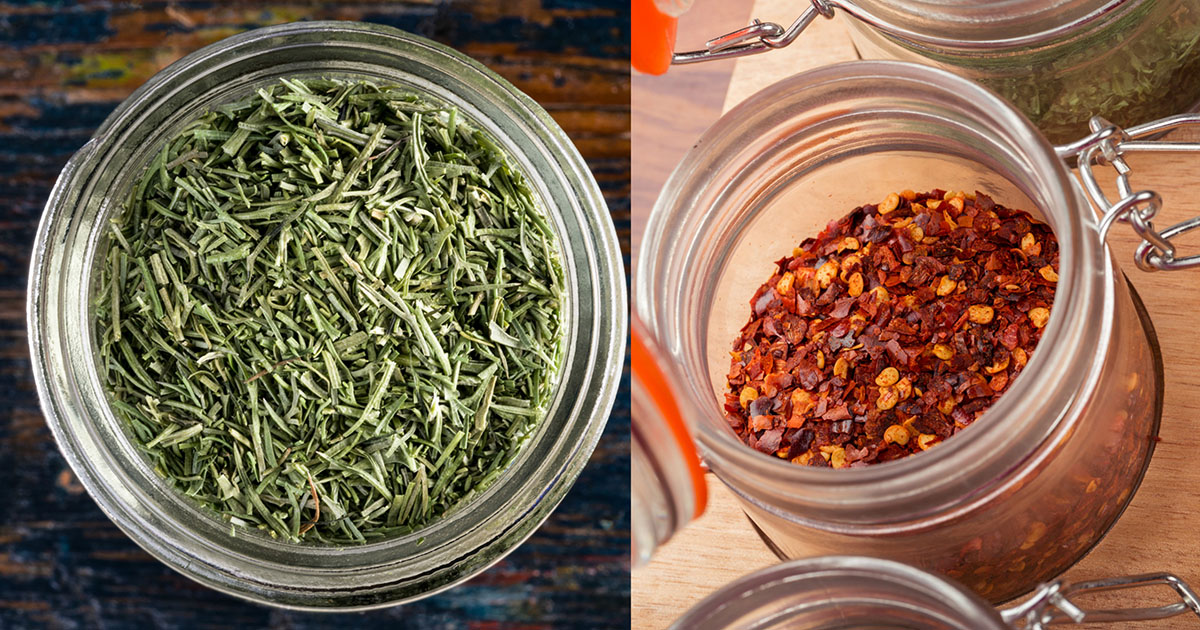
Dill is a savory and delicious herb that not only adds intense flavor to any recipe, but is also a natural remedy for many ailments. Dill may reduce menstrual cramps and treat epilepsy, though more research is needed. It is known to treat depression, lower cholesterol, repels bugs, aids in digestion, boosts energy levels, provides antimicrobial effects, and protects against free radicals. Dill is wonderful in potatoes, soups, and used as a seasoning for poultry and meats.
Known for their amazing spicy flavor, red pepper flakes contain capsaicin, its active compound known for its antioxidant and anti-inflammatory properties. It can even enhance the absorption of specific nutrients. Red pepper can also improve gastrointestinal health, weight management, pain relief, and possibly cancer prevention. Red pepper flakes are fantastic on pizza, in pasta and casseroles, lasagna, and anything else that needs a little extra spice.
Keep reading to learn about the savory herbs loaded with numerous nutrients and vitamins.
Outstanding Oregano & Timeless Thyme
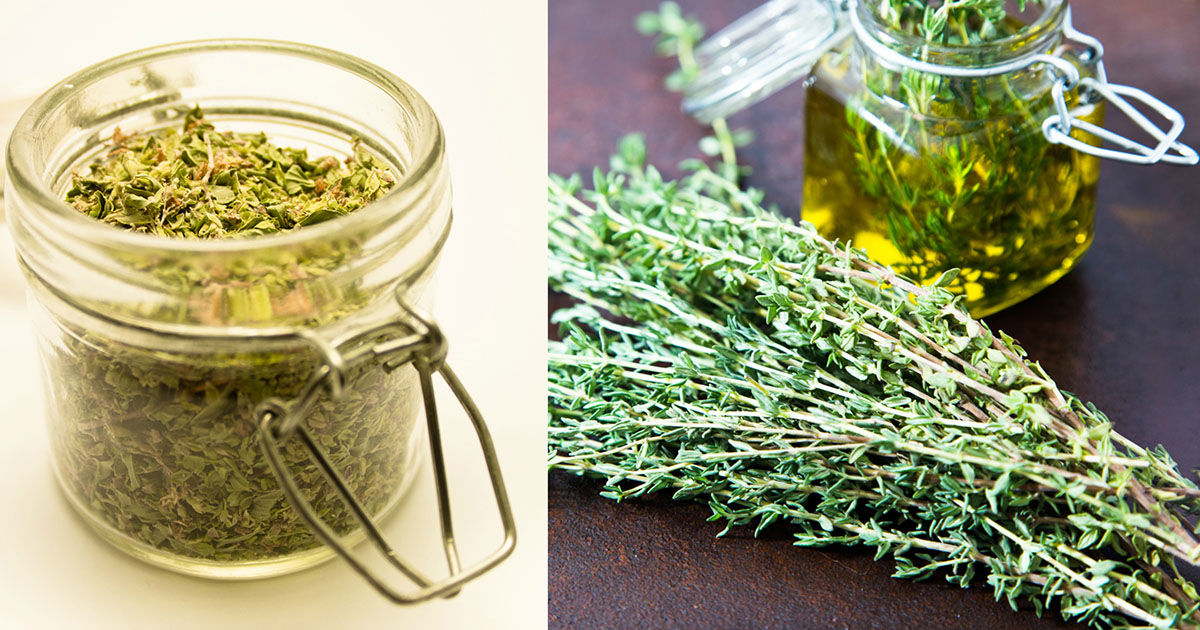
Not just your average seasoning, oregano packs numerous nutrients, including vitamins A, B6, C, E, and K, as well as iron, folate, fiber, calcium, magnesium, and potassium. It also has antioxidant, antimicrobial, and anti-inflammatory properties. Raw oregano and its oil form have also been known to have anti-cancer qualities. Oregano is often used in many Italian dishes and tastes fantastic on pizzas, and in pasta, sauces, meatballs, and soups.
Thyme, another herb found in the mint family, is a wonderful herb that contains thymol, a potent antioxidant that can heal a variety of ailments including wounds by adding it to bathwater. Mixing thyme with water can also heal gum infections when swished around the mouth.Teas made with thyme have also been used to treat athlete's foot and yeast infections, as well as other illnesses, such as colds, to speed up recovery time. Although most commonly used in French and Italian cooking, thyme is also a key ingredient in stuffing and turkey dinner due to its rich, savory flavor, making this the perfect spice to add to a savory recipe.